Fur, Fins, and Feathers: Animals | Series Made Simple Spring 2011
 Read Series Made Simple, School Library Journal's guide to the latest series nonfiction
Read Series Made Simple, School Library Journal's guide to the latest series nonfiction
Echoing the struggle for existence in the natural world, nonfiction series are continuing to evolve from their cruder, shorter-lived ancestors. Vestiges of the past—uninformative or cheap-looking illustrations, factual howlers, content simplified into bland platitudes and generalities—still make occasional appearances, as noted below. In general, though, the improving quality of art and text alike in this season’s litter of animal surveys ensures strong appeal to the burgeoning interests and intellects of young readers, and also addresses curriculum needs and the (one hopes, higher) standards of educators. Thirty-two page treatments are plainly on their way out, though, and there’s still room for content improvement—particularly in back matter, where perfunctory material remains the norm.
Preschool—Grade 4
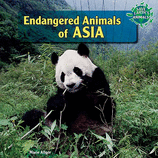 ALLGOR, Marie. Endangered Animals of Africa. ISBN 978-1-4488-2528-8; ISBN 978-1-4488-2821-0. LC 2010022486. ————. Endangered Animals of Asia. ISBN 978-1-4488-2529-5; ISBN 978-1-4488-2822-7. LC 2010022485. ————. Endangered Animals of Australia. ISBN 978-1-4488-2530-1; ISBN 978-1-4488-2823-4. LC 2010022494. ————. Endangered Animals of Europe. ISBN 978-1-4488-2531-1; ISBN 978-1-4488-2824-1. LC 2010023412. ————. Endangered Animals of North America. ISBN 978-1-4488-2532-5; ISBN 978-1-4488-2825-8. LC 2010023414. ————. Endangered Animals of South America. ISBN 978-1-4488-2533-2; ISBN 978-1-4488-2826-5. LC 2010025757. ————. Endangered Animals of Antarctica and the Arctic. ISBN 978-1-4488-2534-9; ISBN 978-1-4488-2827-2. LC 2010027077. ea vol: 24p. (Save Earth’s Animals! Series). map. glossary. index. Web sites. CIP. Rosen/PowerKids Pr. 2011. PLB $21.25; ebook $21.25. Gr 3-4—Despite the skimpy page counts, these volumes offer useful introductions to the idea of endangered species by introducing either five or six rare animals on every continent. Each profile includes basic information about the animal’s appearance, habitat, food, geographical distribution, and vulnerability. Some of the accompanying photos are filler—of the three pictures on a spread devoted to the golden lion tamarin, only one is of the creature itself; the other two feature its natural predators. Also, there are no definitions for “vulnerable,” “threatened,” “endangered,” or “critically endangered.” Still, these books are valuable consciousness raisers. Recommended web resources are relegated to the publisher’s site.
ALLGOR, Marie. Endangered Animals of Africa. ISBN 978-1-4488-2528-8; ISBN 978-1-4488-2821-0. LC 2010022486. ————. Endangered Animals of Asia. ISBN 978-1-4488-2529-5; ISBN 978-1-4488-2822-7. LC 2010022485. ————. Endangered Animals of Australia. ISBN 978-1-4488-2530-1; ISBN 978-1-4488-2823-4. LC 2010022494. ————. Endangered Animals of Europe. ISBN 978-1-4488-2531-1; ISBN 978-1-4488-2824-1. LC 2010023412. ————. Endangered Animals of North America. ISBN 978-1-4488-2532-5; ISBN 978-1-4488-2825-8. LC 2010023414. ————. Endangered Animals of South America. ISBN 978-1-4488-2533-2; ISBN 978-1-4488-2826-5. LC 2010025757. ————. Endangered Animals of Antarctica and the Arctic. ISBN 978-1-4488-2534-9; ISBN 978-1-4488-2827-2. LC 2010027077. ea vol: 24p. (Save Earth’s Animals! Series). map. glossary. index. Web sites. CIP. Rosen/PowerKids Pr. 2011. PLB $21.25; ebook $21.25. Gr 3-4—Despite the skimpy page counts, these volumes offer useful introductions to the idea of endangered species by introducing either five or six rare animals on every continent. Each profile includes basic information about the animal’s appearance, habitat, food, geographical distribution, and vulnerability. Some of the accompanying photos are filler—of the three pictures on a spread devoted to the golden lion tamarin, only one is of the creature itself; the other two feature its natural predators. Also, there are no definitions for “vulnerable,” “threatened,” “endangered,” or “critically endangered.” Still, these books are valuable consciousness raisers. Recommended web resources are relegated to the publisher’s site.
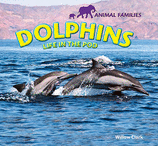 CLARK, Willow. Dolphins: Life in the Pod. ISBN 978-1-4488-2512-7; ISBN 978-1-4488-2805-0. LC 2010019399. ————. Gorillas: Life in the Troop. ISBN 978-1-4488-2514-1; ISBN 978-1-4488-2807-4. LC 2010019393. ————. Lions: Life in the Pride. ISBN 978-1-4488-2513-4; ISBN 978-1-4488-2806-7. LC 2010019303. ————. Meerkats: Life in the Mob. ISBN 978-1-4488-2511-0; ISBN 978-1-4488-2804-3. LC 2010019300. ————. Penguins: Life in the Colony. ISBN 978-1-4488-2510-3; ISBN 978-1-4488-2803-6. LC 2010019392. ————. Wolves: Life in the Pack. ISBN 978-1-4488-2515-8; ISBN 978-1-4488-2808-1. LC 2010019394. ea vol: 24p. (Animal Families Series). photos. glossary. index. Web sites. CIP. Rosen/PowerKids Pr. 2011. PLB $21.25; ebook $21.25. K-Gr 1—Though possibly useful for extending ideas of what constitutes a “family,” in other respects these volumes are of uneven quality at best. Each spread pairs one- to two-sentence descriptions with dark, oversaturated, full-bleed animal photos, and closes with a nearly nonexistent index and a glossary in which words are defined only through tiny pictures. The relationship between narrative and pictures is sometimes tenuous; in Penguins the statement that “there are 17 kinds of penguins” is illustrated with portraits of five (and those not depicted to scale), and in Dolphins a vague claim that “the pod works together when a member is hurt” accompanies a generic view of dolphins swimming. Penguins is further marred by the bald (and arguable) assertion that “the emperor penguin is the only animal that lives on Antarctica year-round.” Other volumes, particularly those featuring the ever-photogenic lions and meerkats, may draw readers.
CLARK, Willow. Dolphins: Life in the Pod. ISBN 978-1-4488-2512-7; ISBN 978-1-4488-2805-0. LC 2010019399. ————. Gorillas: Life in the Troop. ISBN 978-1-4488-2514-1; ISBN 978-1-4488-2807-4. LC 2010019393. ————. Lions: Life in the Pride. ISBN 978-1-4488-2513-4; ISBN 978-1-4488-2806-7. LC 2010019303. ————. Meerkats: Life in the Mob. ISBN 978-1-4488-2511-0; ISBN 978-1-4488-2804-3. LC 2010019300. ————. Penguins: Life in the Colony. ISBN 978-1-4488-2510-3; ISBN 978-1-4488-2803-6. LC 2010019392. ————. Wolves: Life in the Pack. ISBN 978-1-4488-2515-8; ISBN 978-1-4488-2808-1. LC 2010019394. ea vol: 24p. (Animal Families Series). photos. glossary. index. Web sites. CIP. Rosen/PowerKids Pr. 2011. PLB $21.25; ebook $21.25. K-Gr 1—Though possibly useful for extending ideas of what constitutes a “family,” in other respects these volumes are of uneven quality at best. Each spread pairs one- to two-sentence descriptions with dark, oversaturated, full-bleed animal photos, and closes with a nearly nonexistent index and a glossary in which words are defined only through tiny pictures. The relationship between narrative and pictures is sometimes tenuous; in Penguins the statement that “there are 17 kinds of penguins” is illustrated with portraits of five (and those not depicted to scale), and in Dolphins a vague claim that “the pod works together when a member is hurt” accompanies a generic view of dolphins swimming. Penguins is further marred by the bald (and arguable) assertion that “the emperor penguin is the only animal that lives on Antarctica year-round.” Other volumes, particularly those featuring the ever-photogenic lions and meerkats, may draw readers.
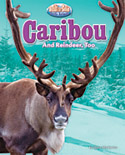 DELALLO, Laura. Arctic Wolf: The High Arctic. ISBN 978-1-61772-132-8; ISBN 978-1-61772-175-5. LC 2010037208. MARKOVICS, Joyce. Caribou: And Reindeer, Too. ISBN 978-1-61772-130-4; ISBN 978-1-61772-176-2. LC 2010038854. ————. Wolverine: Super Strong. ISBN 978-1-61772-131-1; ISBN 978-1-61772-180-9. LC 2010037207. PERSON, Stephen. Polar Bear: Shrinking Ice. ISBN 978-1-61772-129-8; ISBN 978-1-61772-177-9. LC 2010038750. ————. Sled Dog: Powerful Miracle. ISBN 978-1-61772-134-2; ISBN 978-1-61772-178-6. LC 2010041165. ————. Walrus: Tusk, Tusk. ISBN 978-1-61772-133-5; ISBN 978-1-61772-179-3. LC 2010036463. ea vol: 32p. (Built for Cold: Arctic Animals Series). map. photos. bibliog. further reading. glossary. index. Web sites. CIP. Bearport. 2011. PLB $25.27; ebook $18.95. Gr 4-5—Individual volumes in this narrowly focused series merit consideration—particularly Arctic Wolf, as it profiles one of the rarest subspecies on Earth (population estimated at about 200) and Sled Dogs, which opens by introducing Isobel, a blind lead dog, then goes on to cover rescue dogs, dog training, and the Iditarod. The other volumes begin by visiting a research biologist in the field. Each book features systematically presented basic information about its animal’s physical features, habitat (with range maps) and special adaptations, followed by closing spreads of recapped facts and glimpses of several other arctic creatures. Sled Dogs features period photos; it and the others also offer photos of the animals in natural settings.
DELALLO, Laura. Arctic Wolf: The High Arctic. ISBN 978-1-61772-132-8; ISBN 978-1-61772-175-5. LC 2010037208. MARKOVICS, Joyce. Caribou: And Reindeer, Too. ISBN 978-1-61772-130-4; ISBN 978-1-61772-176-2. LC 2010038854. ————. Wolverine: Super Strong. ISBN 978-1-61772-131-1; ISBN 978-1-61772-180-9. LC 2010037207. PERSON, Stephen. Polar Bear: Shrinking Ice. ISBN 978-1-61772-129-8; ISBN 978-1-61772-177-9. LC 2010038750. ————. Sled Dog: Powerful Miracle. ISBN 978-1-61772-134-2; ISBN 978-1-61772-178-6. LC 2010041165. ————. Walrus: Tusk, Tusk. ISBN 978-1-61772-133-5; ISBN 978-1-61772-179-3. LC 2010036463. ea vol: 32p. (Built for Cold: Arctic Animals Series). map. photos. bibliog. further reading. glossary. index. Web sites. CIP. Bearport. 2011. PLB $25.27; ebook $18.95. Gr 4-5—Individual volumes in this narrowly focused series merit consideration—particularly Arctic Wolf, as it profiles one of the rarest subspecies on Earth (population estimated at about 200) and Sled Dogs, which opens by introducing Isobel, a blind lead dog, then goes on to cover rescue dogs, dog training, and the Iditarod. The other volumes begin by visiting a research biologist in the field. Each book features systematically presented basic information about its animal’s physical features, habitat (with range maps) and special adaptations, followed by closing spreads of recapped facts and glimpses of several other arctic creatures. Sled Dogs features period photos; it and the others also offer photos of the animals in natural settings.
 DUNN, Mary R. Hedgehogs. ISBN 978-1-4296-5284-1; ISBN 978-1-4296-6191-1. LC 2010028663. ————. Opossums. ISBN 978-1-4296-5287-2; ISBN 978-1-4296-6192-8. LC 2010028665. ————. Porcupines. ISBN 978-1-4296-5289-6; ISBN 978-1-4296-6193-5. LC 2010028681. JOHNSON, J. Angelique. Bats. ISBN 978-1-4296-5286-5; ISBN 978-1-4296-6190-4. LC 2010028682. ————. Raccoons. ISBN 978-1-4296-5288-9; ISBN 978-1-4296-6194-2. LC 2010028745. ————. Red Foxes. ISBN 978-1-4296-5285-8; ISBN 978-1-4296-6195-9. LC 2010028744. ea vol: 24p. (Pebble Plus: Nocturnal Animals Series). map. photos. further reading. glossary. index. Web sites. CIP. Capstone. 2011. PLB $23.99; pap. $6.95. K-Gr 2—These introductions present mammals that are generally active at night, with short comments on their habitats, feeding habits, defenses, birth and growth of young, and average lifespan for creatures that successfully “stay safe.” The full-page color photos are almost all extreme close-ups, and are taken in natural settings. Simplified range maps add to the informational content.
DUNN, Mary R. Hedgehogs. ISBN 978-1-4296-5284-1; ISBN 978-1-4296-6191-1. LC 2010028663. ————. Opossums. ISBN 978-1-4296-5287-2; ISBN 978-1-4296-6192-8. LC 2010028665. ————. Porcupines. ISBN 978-1-4296-5289-6; ISBN 978-1-4296-6193-5. LC 2010028681. JOHNSON, J. Angelique. Bats. ISBN 978-1-4296-5286-5; ISBN 978-1-4296-6190-4. LC 2010028682. ————. Raccoons. ISBN 978-1-4296-5288-9; ISBN 978-1-4296-6194-2. LC 2010028745. ————. Red Foxes. ISBN 978-1-4296-5285-8; ISBN 978-1-4296-6195-9. LC 2010028744. ea vol: 24p. (Pebble Plus: Nocturnal Animals Series). map. photos. further reading. glossary. index. Web sites. CIP. Capstone. 2011. PLB $23.99; pap. $6.95. K-Gr 2—These introductions present mammals that are generally active at night, with short comments on their habitats, feeding habits, defenses, birth and growth of young, and average lifespan for creatures that successfully “stay safe.” The full-page color photos are almost all extreme close-ups, and are taken in natural settings. Simplified range maps add to the informational content.
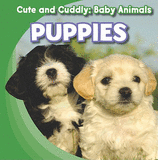 ELORA, Grace. Bear Cubs. ISBN 978-1-4339-4499-4; ISBN 978-1-4339-4502-1. LC 2010035610. ————. Bunnies. ISBN 978-1-4339-4503-8; ISBN 978-1-4339-4506-9. LC 2010032881. ————. Foals. ISBN 978-1-4339-4507-6; ISBN 978-1-4339-4510-6. LC 2010032882. ————. Kittens. ISBN 978-1-4339-4511-3; ISBN 978-1-4339-4514-4. LC 2010038501. ————. Piglets. ISBN 978-1-4339-4515-1; ISBN 978-1-4339-4518-2. LC 2010035611. ————. Puppies. ISBN 978-1-4339-4519-9; ISBN 978-1-4339-4522-9. LC 2010038500. ea vol: 24p. (Cute and Cuddly: Baby Animals Series). photos. glossary. CIP. Gareth Stevens. 2011. PLB $22.60; ebook $22.60. PreS-Gr 1—“Cute” is the operative word here, as these volumes offer a fetching assortment of puppies, kits, cubs, and other young both wild and domestic, seen in close-up color photos. The texts amount to just one or two short, declarative sentences per spread, and back matter is a two- to four-word glossary. Bunnies and Puppies suffer from subpar writing, such as, “Bunnies have no fur at first. Fur grows after a few days” and “A puppy chews on toys. It helps its teeth grow,” but the other books are acceptable additions.
ELORA, Grace. Bear Cubs. ISBN 978-1-4339-4499-4; ISBN 978-1-4339-4502-1. LC 2010035610. ————. Bunnies. ISBN 978-1-4339-4503-8; ISBN 978-1-4339-4506-9. LC 2010032881. ————. Foals. ISBN 978-1-4339-4507-6; ISBN 978-1-4339-4510-6. LC 2010032882. ————. Kittens. ISBN 978-1-4339-4511-3; ISBN 978-1-4339-4514-4. LC 2010038501. ————. Piglets. ISBN 978-1-4339-4515-1; ISBN 978-1-4339-4518-2. LC 2010035611. ————. Puppies. ISBN 978-1-4339-4519-9; ISBN 978-1-4339-4522-9. LC 2010038500. ea vol: 24p. (Cute and Cuddly: Baby Animals Series). photos. glossary. CIP. Gareth Stevens. 2011. PLB $22.60; ebook $22.60. PreS-Gr 1—“Cute” is the operative word here, as these volumes offer a fetching assortment of puppies, kits, cubs, and other young both wild and domestic, seen in close-up color photos. The texts amount to just one or two short, declarative sentences per spread, and back matter is a two- to four-word glossary. Bunnies and Puppies suffer from subpar writing, such as, “Bunnies have no fur at first. Fur grows after a few days” and “A puppy chews on toys. It helps its teeth grow,” but the other books are acceptable additions.
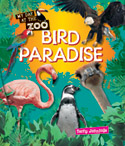 JENNINGS, Terry. Amazing Aquarium. ISBN 978-1-59566-921-6. LC 2010017911. ————. Bird Paradise. ISBN 978-1-59566-920-9. LC 2010017912. ————. Mammal Kingdom. ISBN 978-1-59566-922-3. LC 2010017913. ————. Reptile Park. ISBN 978-1-59566-919-3. LC 2010017914. ea vol: 24p. (QEB My Day at the Zoo Series). maps. photos. glossary. index. QEB. 2011. PLB $24.25. Gr 2-3—Designed to prepare students for visits to zoos or nature parks, each of these volumes provides basic background information about a type of animal usually found in such places, enhanced by shaped cutout photos and shots of creatures in artificial settings. Texts printed in different sizes of type on each spread to signal different levels of detail include simple general header statements, personal comments from the author (“The parrot I saw was a green-winged macaw from South America”) and short expository captions related to one or two accompanying portraits. Each spread also includes a range map and a small note on an endangered species. Closing “Notes for Parents and Teachers” list websites and often feature information on environmental hazards or conservation efforts. Though some pages have a crowded look, these will be popular and useful field-trip enhancers.
JENNINGS, Terry. Amazing Aquarium. ISBN 978-1-59566-921-6. LC 2010017911. ————. Bird Paradise. ISBN 978-1-59566-920-9. LC 2010017912. ————. Mammal Kingdom. ISBN 978-1-59566-922-3. LC 2010017913. ————. Reptile Park. ISBN 978-1-59566-919-3. LC 2010017914. ea vol: 24p. (QEB My Day at the Zoo Series). maps. photos. glossary. index. QEB. 2011. PLB $24.25. Gr 2-3—Designed to prepare students for visits to zoos or nature parks, each of these volumes provides basic background information about a type of animal usually found in such places, enhanced by shaped cutout photos and shots of creatures in artificial settings. Texts printed in different sizes of type on each spread to signal different levels of detail include simple general header statements, personal comments from the author (“The parrot I saw was a green-winged macaw from South America”) and short expository captions related to one or two accompanying portraits. Each spread also includes a range map and a small note on an endangered species. Closing “Notes for Parents and Teachers” list websites and often feature information on environmental hazards or conservation efforts. Though some pages have a crowded look, these will be popular and useful field-trip enhancers.
 KALMAN, Bobbie. Baby Animals in Desert Habitats. map. ISBN 978-0-7787-7725-0; ISBN 978-0-7787-7738-0. LC 2010047669. ————. Baby Animals in Forest Habitats. ISBN 978-0-7787-7726-7; ISBN 978-0-7787-7739-7. LC 2010047677. ————. Baby Animals in Grassland Habitats. ISBN 978-0-7787-7727-4; ISBN 978-0-7787-7740-3. LC 2010047746. ————. Baby Animals in Mountain Habitats. ISBN 978-0-7787-7728-1; ISBN 978-0-7787-7741-0. LC 2010047919. ————. Baby Animals in Ocean Habitats. map. ISBN 978-0-7787-7729-8; ISBN 978-0-7787-7742-7. LC 2010047920. ————. Baby Animals in Wetland Habitats. ISBN 978-0-7787-7730-4; ISBN 978-0-7787-7743-4. LC 2010047657. ea vol: 24p. (The Habitats of Baby Animals Series). diag. illus. photos. glossary. index. CIP. Crabtree. 2011. PLB $15.95; pap. $6.95. Gr 2-4—Expanding on a topic introduced in her Where Do Animals Live? (Crabtree, 2010), Kalman examines various habitats while upping the appeal with frequent references—heavily reflected in the accompanying photos—to the young of resident mammals or, on occasion, birds. Even in Ocean,fish put in but occasional appearances among the sea mammals, penguins, and polar bears. Each volume points out the difference between living and nonliving parts of the habitat (an important distinction for readers who are still hazy on the concept), discusses food chains and reproductive cycles, and closes with a particularly useful combined glossary/index that includes small photos. Aside from the narrowness of the overall topic, plus a confusing tendency in Desert to use “meerkat” and the equivalent, but less common, “suricate” interchangeably, all of these titles will enhance natural science collections.
KALMAN, Bobbie. Baby Animals in Desert Habitats. map. ISBN 978-0-7787-7725-0; ISBN 978-0-7787-7738-0. LC 2010047669. ————. Baby Animals in Forest Habitats. ISBN 978-0-7787-7726-7; ISBN 978-0-7787-7739-7. LC 2010047677. ————. Baby Animals in Grassland Habitats. ISBN 978-0-7787-7727-4; ISBN 978-0-7787-7740-3. LC 2010047746. ————. Baby Animals in Mountain Habitats. ISBN 978-0-7787-7728-1; ISBN 978-0-7787-7741-0. LC 2010047919. ————. Baby Animals in Ocean Habitats. map. ISBN 978-0-7787-7729-8; ISBN 978-0-7787-7742-7. LC 2010047920. ————. Baby Animals in Wetland Habitats. ISBN 978-0-7787-7730-4; ISBN 978-0-7787-7743-4. LC 2010047657. ea vol: 24p. (The Habitats of Baby Animals Series). diag. illus. photos. glossary. index. CIP. Crabtree. 2011. PLB $15.95; pap. $6.95. Gr 2-4—Expanding on a topic introduced in her Where Do Animals Live? (Crabtree, 2010), Kalman examines various habitats while upping the appeal with frequent references—heavily reflected in the accompanying photos—to the young of resident mammals or, on occasion, birds. Even in Ocean,fish put in but occasional appearances among the sea mammals, penguins, and polar bears. Each volume points out the difference between living and nonliving parts of the habitat (an important distinction for readers who are still hazy on the concept), discusses food chains and reproductive cycles, and closes with a particularly useful combined glossary/index that includes small photos. Aside from the narrowness of the overall topic, plus a confusing tendency in Desert to use “meerkat” and the equivalent, but less common, “suricate” interchangeably, all of these titles will enhance natural science collections.
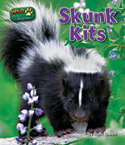 OWEN, Ruth. Arctic Fox Pups. ISBN 978-1-61772-156-4; ISBN 978-1-61772-194-6. LC 2010041245. ————. Beaver Kits. ISBN 978-1-61772-155-7; ISBN 978-1-61772-195-3. LC 2010044415. ————. Lion Cubs. ISBN 978-1-61772-159-5; ISBN 978-1-61772-196-0. LC 2010041246. ————. Polar Bear Cubs. ISBN 978-1-61772-157-1; ISBN 978-1-61772-197-7. LC 2010041247. ————. Raccoon Cubs. ISBN 978-1-61772-154-0; ISBN 978-1-61772-198-4. LC 2010041249. ————. Skunk Kits. ISBN 978-1-61772-161-8; ISBN 978-1-61772-199-1. LC 2010041248. ————. Squirrel Kits. ISBN 978-1-61772-160-1; ISBN 978-1-61772-200-4. LC 2010041250. ————. Tiger Cubs. ISBN 978-1-61772-158-8; ISBN 978-1-61772-201-1. LC 2010041251. ea vol: 24p. (Wild Baby Animals Series). photos. further reading. glossary. index. Web sites. CIP. Bearport. 2011. PLB $19.96; ebook $14.97. K-Gr 1—In three to six short, declarative sentences per spread, each of these volumes mentions a wild animal’s typical family, range, habitat, home, juvenile development, and diet. The photos of young creatures exert a predictable appeal, but the quality of the reproductions is subpar, varying from barely adequate to blurry and garishly tinted. The indexes and reading lists are perfunctory, though at this elementary level probably superfluous. Routine at best.
OWEN, Ruth. Arctic Fox Pups. ISBN 978-1-61772-156-4; ISBN 978-1-61772-194-6. LC 2010041245. ————. Beaver Kits. ISBN 978-1-61772-155-7; ISBN 978-1-61772-195-3. LC 2010044415. ————. Lion Cubs. ISBN 978-1-61772-159-5; ISBN 978-1-61772-196-0. LC 2010041246. ————. Polar Bear Cubs. ISBN 978-1-61772-157-1; ISBN 978-1-61772-197-7. LC 2010041247. ————. Raccoon Cubs. ISBN 978-1-61772-154-0; ISBN 978-1-61772-198-4. LC 2010041249. ————. Skunk Kits. ISBN 978-1-61772-161-8; ISBN 978-1-61772-199-1. LC 2010041248. ————. Squirrel Kits. ISBN 978-1-61772-160-1; ISBN 978-1-61772-200-4. LC 2010041250. ————. Tiger Cubs. ISBN 978-1-61772-158-8; ISBN 978-1-61772-201-1. LC 2010041251. ea vol: 24p. (Wild Baby Animals Series). photos. further reading. glossary. index. Web sites. CIP. Bearport. 2011. PLB $19.96; ebook $14.97. K-Gr 1—In three to six short, declarative sentences per spread, each of these volumes mentions a wild animal’s typical family, range, habitat, home, juvenile development, and diet. The photos of young creatures exert a predictable appeal, but the quality of the reproductions is subpar, varying from barely adequate to blurry and garishly tinted. The indexes and reading lists are perfunctory, though at this elementary level probably superfluous. Routine at best.
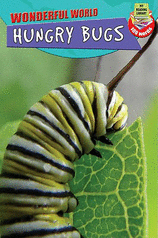 OWEN, Ruth. Blast Off! illus. reprods. ISBN 978-1-84898-380-9. LC 2010925595. ————. Hungry Bugs. diag. ISBN 978-1-84898-379-3. LC 2010925600. ————. Snappy Sharks. illus. ISBN 978-1-84898-377-9. LC 2010925601. ————. Under the Sea. ISBN 978-1-84898-378-6. LC 2010925602. ea vol: 24p. (My Reading Library: Wonderful World Series). photos. glossary. index. New Forest Press. 2011. PLB $24.25. K-Gr 1—Each of these volumes pairs 100 words—split into header phrases, one or two declarative sentences per page, picture labels, and a glossary spread at the end—with brightly colored photos. Blast Off! and Sharks also feature digitally created images. Brevity notwithstanding, the vocabulary is not necessarily low level, as terms like “larvae,” “clownfish,” and “spacesuit” attest. Each title covers generous topical territory: several common residents of a coral reef float past in Under the Sea, for instance, and Blast Off! roars past rockets, astronauts, the space shuttle, the Moon, and even the solar system. Though most of the photos in Snappy Sharks are disappointingly non-toothy, Hungry Bugs features plenty of chowing down and crowd-pleasing facts such as, “This dung beetle eats elephant poo!” The content may be vanishingly thin, but the presentations are stimulating.
OWEN, Ruth. Blast Off! illus. reprods. ISBN 978-1-84898-380-9. LC 2010925595. ————. Hungry Bugs. diag. ISBN 978-1-84898-379-3. LC 2010925600. ————. Snappy Sharks. illus. ISBN 978-1-84898-377-9. LC 2010925601. ————. Under the Sea. ISBN 978-1-84898-378-6. LC 2010925602. ea vol: 24p. (My Reading Library: Wonderful World Series). photos. glossary. index. New Forest Press. 2011. PLB $24.25. K-Gr 1—Each of these volumes pairs 100 words—split into header phrases, one or two declarative sentences per page, picture labels, and a glossary spread at the end—with brightly colored photos. Blast Off! and Sharks also feature digitally created images. Brevity notwithstanding, the vocabulary is not necessarily low level, as terms like “larvae,” “clownfish,” and “spacesuit” attest. Each title covers generous topical territory: several common residents of a coral reef float past in Under the Sea, for instance, and Blast Off! roars past rockets, astronauts, the space shuttle, the Moon, and even the solar system. Though most of the photos in Snappy Sharks are disappointingly non-toothy, Hungry Bugs features plenty of chowing down and crowd-pleasing facts such as, “This dung beetle eats elephant poo!” The content may be vanishingly thin, but the presentations are stimulating.
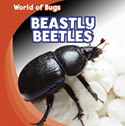 ROZA, Greg. Beastly Beetles. ISBN 978-1-4339-4599-1; ISBN 978-1-4339-4602-8. LC 2010034392. ————. Freaky Flies. ISBN 978-1-4339-4595-3; ISBN 978-1-4339-4598-4. LC 2010022234. ————. Mysterious Mantises. ISBN 978-1-4339-4603-5; ISBN 978-1-4339-4606-6. LC 2010031814. ————. Repulsive Roaches. ISBN 978-1-4339-4607-3; ISBN 978-1-4339-4610-3. LC 2010031816. ————. Strange Spiders. ISBN 978-1-4339-4611-0; ISBN 978-1-4339-4614-1. LC 2010034393. ————. Weird Walking Sticks. ISBN 978-1-4339-4615-8; ISBN 978-1-4339-4618-9. LC 2010031815. ea vol: 24p. (World of Bugs Series). photos. glossary. CIP. Gareth Stevens. 2011. PLB $22.60; ebook $22.60. K-Gr 1—Loosely interpreting “bugs” to include spiders, this series gives new readers a sense of the huge variety of shapes and colors in which insects (and arachnids) come. Opposite descriptive texts of one or two sentences per spread, high-quality, close-range photos show the creatures in poses and from angles designed to display heads, legs, and other parts clearly. Despite the titles, children are more likely to be intrigued than repelled by these portrait galleries; the winged and wingless walking sticks look as exotic as sea horses, and the creepy crawlies in Roaches are large, tropical species rather than the common household sorts. Each volume ends with four or five “Words to Know,” but has no other back matter.
ROZA, Greg. Beastly Beetles. ISBN 978-1-4339-4599-1; ISBN 978-1-4339-4602-8. LC 2010034392. ————. Freaky Flies. ISBN 978-1-4339-4595-3; ISBN 978-1-4339-4598-4. LC 2010022234. ————. Mysterious Mantises. ISBN 978-1-4339-4603-5; ISBN 978-1-4339-4606-6. LC 2010031814. ————. Repulsive Roaches. ISBN 978-1-4339-4607-3; ISBN 978-1-4339-4610-3. LC 2010031816. ————. Strange Spiders. ISBN 978-1-4339-4611-0; ISBN 978-1-4339-4614-1. LC 2010034393. ————. Weird Walking Sticks. ISBN 978-1-4339-4615-8; ISBN 978-1-4339-4618-9. LC 2010031815. ea vol: 24p. (World of Bugs Series). photos. glossary. CIP. Gareth Stevens. 2011. PLB $22.60; ebook $22.60. K-Gr 1—Loosely interpreting “bugs” to include spiders, this series gives new readers a sense of the huge variety of shapes and colors in which insects (and arachnids) come. Opposite descriptive texts of one or two sentences per spread, high-quality, close-range photos show the creatures in poses and from angles designed to display heads, legs, and other parts clearly. Despite the titles, children are more likely to be intrigued than repelled by these portrait galleries; the winged and wingless walking sticks look as exotic as sea horses, and the creepy crawlies in Roaches are large, tropical species rather than the common household sorts. Each volume ends with four or five “Words to Know,” but has no other back matter.
 DUNN, Mary R. Hedgehogs. ISBN 978-1-4296-5284-1; ISBN 978-1-4296-6191-1. LC 2010028663. ––––. Opossums. ISBN 978-1-4296-5287-2; ISBN 978-1-4296-6192-8. LC 2010028665. ––––. Porcupines. ISBN 978-1-4296-5289-6; ISBN 978-1-4296-6193-5. LC 2010028681. JOHNSON, J. Angelique. Bats. ISBN 978-1-4296-5286-5; ISBN 978-1-4296-6190-4. LC 2010028682. ––––. Raccoons. ISBN 978-1-4296-5288-9; ISBN 978-1-4296-6194-2. LC 2010028745. ––––. Red Foxes. ISBN 978-1-4296-5300-8; ISBN 978-1-4296-6199-7. LC 2010025465. ea vol: 24p. (Pebble Plus: Animals Working Together Series). photos. further reading. glossary. index. Web sites. CIP. Capstone. 2011. PLB $23.99; pap. $6.95. K-Gr 2—Introducing symbiosis in nature, these volumes pair full-page color photos with two or three sentences of information each on facing pages. The large-type texts run to only 175-190 words per volume, and are similar but not identical to each other in wording and structure. The easy-to-understand examples are well selected to show a range of relationships in a variety of environments, and children will come away with some exposure to the concepts of “parasite” and “predator” as well.
DUNN, Mary R. Hedgehogs. ISBN 978-1-4296-5284-1; ISBN 978-1-4296-6191-1. LC 2010028663. ––––. Opossums. ISBN 978-1-4296-5287-2; ISBN 978-1-4296-6192-8. LC 2010028665. ––––. Porcupines. ISBN 978-1-4296-5289-6; ISBN 978-1-4296-6193-5. LC 2010028681. JOHNSON, J. Angelique. Bats. ISBN 978-1-4296-5286-5; ISBN 978-1-4296-6190-4. LC 2010028682. ––––. Raccoons. ISBN 978-1-4296-5288-9; ISBN 978-1-4296-6194-2. LC 2010028745. ––––. Red Foxes. ISBN 978-1-4296-5300-8; ISBN 978-1-4296-6199-7. LC 2010025465. ea vol: 24p. (Pebble Plus: Animals Working Together Series). photos. further reading. glossary. index. Web sites. CIP. Capstone. 2011. PLB $23.99; pap. $6.95. K-Gr 2—Introducing symbiosis in nature, these volumes pair full-page color photos with two or three sentences of information each on facing pages. The large-type texts run to only 175-190 words per volume, and are similar but not identical to each other in wording and structure. The easy-to-understand examples are well selected to show a range of relationships in a variety of environments, and children will come away with some exposure to the concepts of “parasite” and “predator” as well.
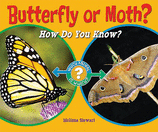 STEWART, Melissa. Alligator or Crocodile?: How Do You Know? ISBN 978-0-7660-3677-2. LC 2010003275. ————. Butterfly or Moth?: How Do You Know? ISBN 978-0-7660-3678-9. LC 2010003276. ————. Insect or Spider?: How Do You Know? ISBN 978-0-7660-3681-9. LC 2010003278. ————. Salamander or Lizard?: How Do You Know? ISBN 978-0-7660-3679-6. LC 2010003279. ————. Shark or Dolphin?: How Do You Know? ISBN 978-0-7660-3680-2. LC 2010003280. ea vol: 24p. (Which Animal is Which? Series). photos. further reading. glossary. index. Web sites. CIP. Enslow. 2011. PLB $21.26. Gr 2-3—Though not particularly helpful for quick identification—“Most butterflies fly during the day,” while “Most moths fly at night,” is a characteristic distinction—these dual profiles of common creatures should give budding naturalists an increased understanding of how scientists use appearance and behavior to classify sometimes-similar living things, along with introducing important terms like “cephalothorax” and “chrysalis.” Spreads feature sharply detailed paired photographs of identified specimens seen from the same angle and at roughly equal size (i.e., not always to scale), with accompanying explanatory statements. The highlighted differences are then recapped on a single spread, and every book closes with a salient and potentially surprising new fact about each type of animal. Consider these books to lay groundwork for nature expeditions and for later studies of taxonomy.
STEWART, Melissa. Alligator or Crocodile?: How Do You Know? ISBN 978-0-7660-3677-2. LC 2010003275. ————. Butterfly or Moth?: How Do You Know? ISBN 978-0-7660-3678-9. LC 2010003276. ————. Insect or Spider?: How Do You Know? ISBN 978-0-7660-3681-9. LC 2010003278. ————. Salamander or Lizard?: How Do You Know? ISBN 978-0-7660-3679-6. LC 2010003279. ————. Shark or Dolphin?: How Do You Know? ISBN 978-0-7660-3680-2. LC 2010003280. ea vol: 24p. (Which Animal is Which? Series). photos. further reading. glossary. index. Web sites. CIP. Enslow. 2011. PLB $21.26. Gr 2-3—Though not particularly helpful for quick identification—“Most butterflies fly during the day,” while “Most moths fly at night,” is a characteristic distinction—these dual profiles of common creatures should give budding naturalists an increased understanding of how scientists use appearance and behavior to classify sometimes-similar living things, along with introducing important terms like “cephalothorax” and “chrysalis.” Spreads feature sharply detailed paired photographs of identified specimens seen from the same angle and at roughly equal size (i.e., not always to scale), with accompanying explanatory statements. The highlighted differences are then recapped on a single spread, and every book closes with a salient and potentially surprising new fact about each type of animal. Consider these books to lay groundwork for nature expeditions and for later studies of taxonomy.
In sum, Capstone’s “Pebble Plus: Animals Working Together” and Gareth Stevens’s “World of Bugs” merit places in collections serving younger readers, and for middle graders, Crabtree’s “The Habitats of Baby Animals" and PowerKids’s “Save Earth’s Animals!” are likewise above average. Though uneven presentations in the same publisher’s “Animal Families” and subpar illustrations in Bearport’s “Wild Baby Animals” are likely to earn those two series quick extinction, the rest of this pack is fit to survive wherever additional material on the offered range of animals and topics is desired.
Read Series Made Simple, School Library Journal's guide to the latest series nonfiction
The job outlook in 2030: Librarians will be in demand
The job outlook in 2030: Librarians will be in demand
ALREADY A SUBSCRIBER? LOG IN
We are currently offering this content for free. Sign up now to activate your personal profile, where you can save articles for future viewing






Add Comment :-
Be the first reader to comment.
Comment Policy:
Comment should not be empty !!!